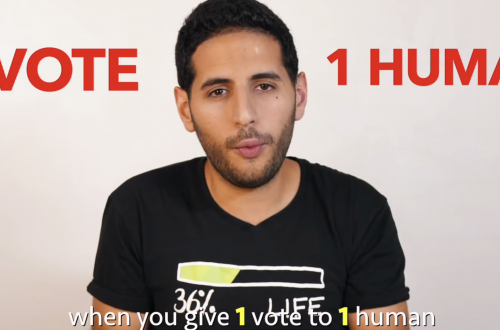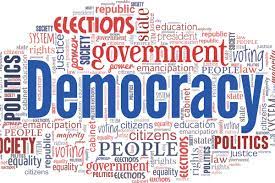Cross-posted from Tehran Bureau
By Sohrab Ahmari and Nasser Weddady
Recently, hundreds of Egyptians gathering in downtown Cairo were brutally repressed by security forces. Nearly 100 demonstrators were beaten and detained merely for exercising their universal rights to free speech and assembly to protest Egypt’s 29-year-old emergency law. But aside from a solitary AP dispatch, the protest went largely unnoticed in the West. Egyptians seeking international recognition for their struggle were demoralized, with some lamenting on Twitter: “Are Persians made of gold and Egyptians made of s**t?”
The Egyptians’ complaint referred to the international coverage and attendant goodwill afforded the ongoing Iranian uprising after last June’s fraudulent election. Ironically, beleaguered Iranian democrats have issued a similar lament during street protests: “Are Gazans made of gold and Persians of s**t?” The comparison critiques the willingness of some Western liberals to ignore the Iranian struggle while vociferously spotlighting Gaza.
These parallel laments, from cities hundreds of miles apart, point to an encouraging new phenomenon: the emergence of a transnational democratic consciousness across large swaths of the Mideast. Thanks to Facebook, YouTube, and Twitter, Middle Easterners are increasingly exposed to firsthand reports of reform struggles in nearby countries — and are in turn adopting new techniques for their own struggles against despotism. For those fed up with tyranny at home, the struggle for human rights carried out by neighbors provides both inspiration and tactical lessons in nonviolent resistance.
Yet the same ethic and sectarian tensions — Persian versus Arab, Sunni versus Shia, etc. — that often make the region such a dangerous place for its inhabitants also divide its reformers. For example, because many Iranians believe Ahmadinejad imported Hezbollah thugs from Lebanon to violently repress the postelection protests, some Greens give voice to racist anti-Arab sentiments. Conversely, Arab nationalistic and anti-Israel sentiments have pushed some on the Arab street, including progressives, to embrace the Iranian regime’s belligerence — in spite of the threat the mullahs’ militarism and meddling poses to Arab states.
This is wasted potential. Arab and Iranian democrats have much to offer one another. Since the election uprising broke out, Iranian democrats have mastered numerous clever, nonviolent strategies: writing antiregime slogans on banknotes, refusing to pay gas bills to state-owned companies, and mass chanting of “Allah-o Akbar” from rooftops after nightfall. Arab reformers can adopt many of these tactics so they — like the Iranians — can move their struggle against autocratic misrule from the virtual world to the street on a similar scale.
Moreover, after the rigged election, Iranian dissidents previously at each others’ throats over ideological differences successfully forged — and have largely maintained — a united front. Their massive street protests prompted a violent response that discredited all of the regime’s claims to respect the democratic process and any of its lingering revolutionary credibility.
Arab reformers remain internally divided across ideological lines and have allowed their cause to be smothered by the overwhelming focus on the Israeli-Palestinian conflict. Arab reform movements need to rebrand their campaigns so that the Western public understands that a successful and lasting peace process in the Middle East entails resolving the conflict between citizens and their rulers. Iranians have managed to frame their struggle in this way, demonstrating vividly how they live under internal occupation.
Arab activists, for their part, have pioneered the use of information technologies for activist ends. At the recent Cairo protest, the names of detained protestors were relayed in real time by hundreds of social media users to marshal an army of volunteer lawyers and ensure that detained protestors do not disappear indefinitely in the regime’s jails. Dissidents in Arab countries, like Egypt’s Wael Abbas and Tunisia’s Sami Ben Gharbia, have spent years developing sophisticated technology to expose repression and are inspiring a second generation of younger activists. Now that many Iranian dissidents have been driven back underground, they would do well to study the examples of North African cyberreformers.
Though led by Iranian Shia clerics, the 1979 Iranian Revolution profoundly impacted Sunni Arab states deep into the Maghreb. Islamists in Lebanon, Sudan, Algeria, and beyond saw Khomeini’s revolution as a vivid blueprint, one that confirmed the prophecies of Sunni Arab Islamist ideologues like Sayid Qutb. Just two years ago, Egypt’s Muslim Brotherhood proposed establishing a ruling clerical elite based on Iran’s Guardian Council.
Today, the region’s salvation may very well be the result of the emergence of a new Arab-Iranian alliance, only this time an “axis of democrats.” The laments of battered protestors in Egypt and Iran should be taken as a call to cooperation. Arab and Iranian democrats – like all people who stand up peacefully and purposefully against dictatorship – are made of gold.
Sohrab Ahmari is an Iranian-American blogger studying law at Northeastern University. Nasser Weddady is Civil Rights Outreach Director at the American Islamic Congress.


